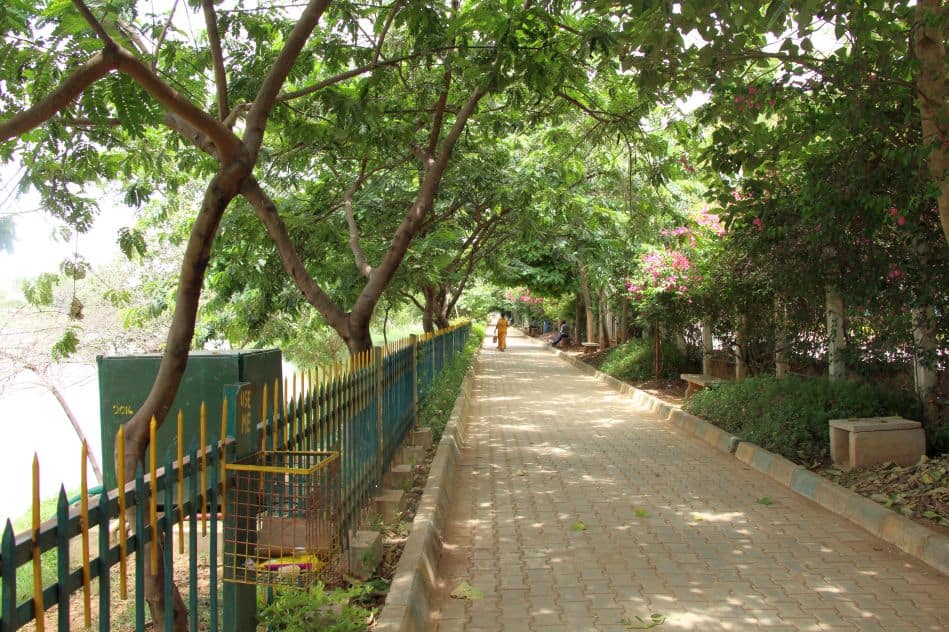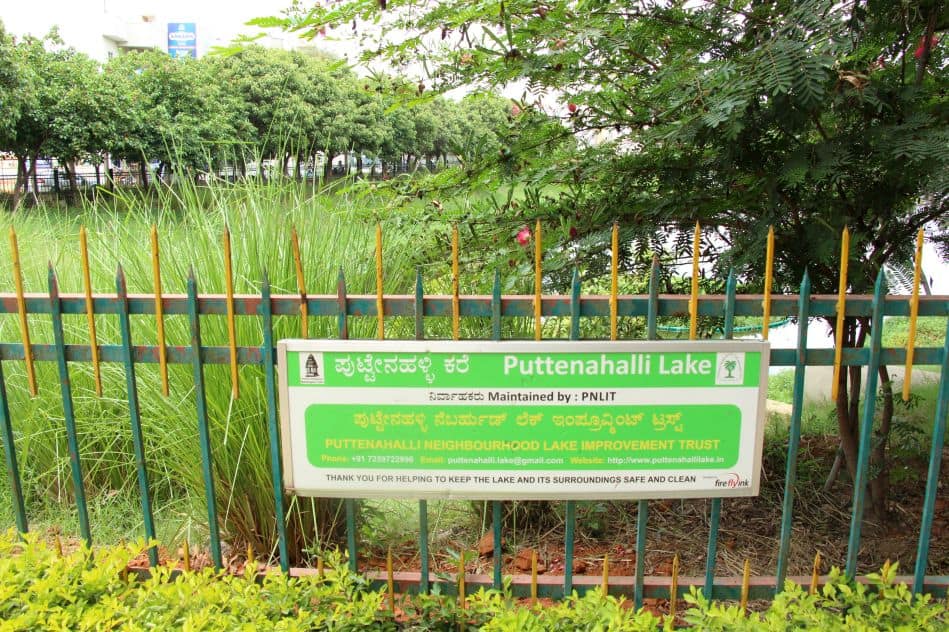A decade ago, sewage flowed where water once did, in the lakebed of Bengaluru’s Puttenahalli Lake. Today it is 13-acres of clean water, a diverse ecosystem and a peaceful area for community members. It is a shining example of a successful lake rejuvenation, a movement more complicated than it may seem.
Apart from being public commons and beautiful displays of nature, lakes are essential for groundwater recharge and rainwater collection, important to Bengaluru especially in the days of water shortage. Rain water canals connect lakes to each other, thus lakes end up sinking a lot of groundwater, while excess of water is carried to yet another lake downstream.
Today Bengaluru harbours 210 lakes, 80 percent of which are in a state of crisis. It is safe to say Bengaluru is experiencing a lake emergency. We know encroachment, pollution, sewage and waste are the culprits that have deteriorated the great water bodies. The question is not what happened to the lakes. But, what is being done to save them?
What challenges are faced by lakes?
“We should understand that BWSSB (Bengaluru Water Supply and Sewage Board) provides only half the water that is required for Bengaluru. The other half actually rely on groundwater through borewells and tankers supplied to their homes,” says Sridhar Pabbisetty, CEO of Namma Bengaluru Foundation. “All of this groundwater is at the risk of getting contaminated through e-coli and various cancer-causing pollutants.” This is because the water in the lakes is highly contaminated.
Bengaluru’s missing sewage system is a major cause behind the deterioration of its lakes. As storm water drains are used as sewage lines in most parts of the city. They deposit raw sewage into lakes, contaminating the groundwater and rendering it unfit for consumption. As urban development increases apartment buildings and slums contribute to this pollution.
Encroachments shrink the size of lakes, and in some cases have completely abolished them. To further complicate the issue, groundwater recharge can only be achieved by a healthy lake. When a lake dies, so do the ecosystems they support, including numerous birds, fish and aquatic species.
How the Save Lakes movement started
Bengaluru’s lakes were once a thriving network of ecosystems and water supply. The city built itself upon a network of lakes maintained by farmers. Bengaluru did not have a constant water supply until the 1970s and relied on harvesting lake water, storing it during monsoons and using the supply for consumption and crops after the rainy season. Once Bengaluru began to rapidly expand and piped water become widely available, lakes were neglected, polluted and have progressively worsened.
The Bengaluru’s lakes movement is not new. In the 1980s, there was a call by the citizens to save Bengaluru’s lakes. A committee was formed to make recommendations on lake rejuvenations. In the 1990s the movement picked up as water demand of the city soared and many realised that water from the Cauvery River was not a long-term solution.
In the 2000s, privatisation was a popular solution. The government of Karnataka decided to lease out lakes to private parties. Nagawara, Vengaiyanakere, Hebbal and Agara lakes were to be leased out to private parties, who would maintain the lake as well as use it as a recreational space, to generate income. Vengaiyana Kere and Nagawara have now got developed into recreational spaces, though there has been no focus on their water quality.
It was then that the Bengaluru-based NGO Environment Support Group came up with its now-famous Public Interest Litigation on lakes. The High Court of Karnataka decided that the lakes were public commons, hence need to be maintained by the citizens and the city administrations. Leasing out a lake to a private party ceased to be an option, and the works planned at Hebbal and Agara lakes stopped. Hebbal still continues to be under the lease to a private party, while Agara lake has been out of the deal.

Walking path surrounding Puttenahalli lake. Pic: Kennedy Wirth
The court also appointed justice N K Patil to work on a solution formula. The NK Patil Committee report recommended that citizens living around lakes be made stakeholders in the lake rejuvenation programmes.
In 2011, the then-state chief minister sanctioned a part of the BBMP budget for lake rejuvenation for the first time. A total of 150 crores became available for lake rejuvenation and protection, creating a wave of lake rejuvenation processes throughout the city and a renewed passion for saving Bengaluru’s lakes.
BBMP’s lake rejuvenation efforts
After 2008, many of Bengaluru’s lakes were handed over to the BBMP (Bruhat Bengaluru Mahanagara Palike), after being rejuvenated by Bengaluru Development Authority (BDA). They were fenced, the lake was desilted, pathways and gazebos built, man-made wetlands constructed and an entire clean up of the area was done.
This is a process that takes about a year and a half to complete and must be done around monsoon season. This results in clean lake water, free of pollution, thriving ecosystems and a beautiful premise. Just as the disappearance of lakes is correlated to human actions of encroaching and pollution, it is only human efforts that will put them back on the map.
However, money remained a problem in reviving Bengaluru’s lakes. In fact, there were instances of BBMP not being able to take care of the lakes that were handed over by BDA after rejuvenation.
Citizens get involved
In 2008, a group was formed in J P Nagar, that eventually became the Puttenahalli Neighborhood Lake Improvement Trust (PNLIT). This group helped with the rejuvenation of Puttenahalli Lake with assistance from the BBMP. The plans were drawn out based on recommendations by environmentalists who visited the area.

Pic: Kennedy Wirth
Down the line, the PNLIT gave suggestions for improvements and problem solving as their experience with the lake grew. Work began in 2009 with a fence being built around the parameter and today the lake is a diverse ecosystem, local common area and source of groundwater recharge.
Today Puttenahalli Lake is a successful example of lake rejuvenation and is a thriving ecosystem, pleasant common area and an area free of sewage and waste. Similarly, Kaikondrahalli lake, Herohalli Lake, Mallathahalli Lake, Ullala Lake, Kempambudhi Lake, Dorekere Lake, Arakere Lake, Yediyur Lake and many other lakes around Bengaluru have undergone the same transformation deeming them rejuvenated
While all these examples gladden our hearts, the situation on the ground is not so reassuring. In the second part, we cover the challenges faced by the lake stewards who fight daily battles in maintaining the lakes.
Good Article without one line on #UnitedBengaluru and it’s efforts in saving Bengaluru Lakes. Thanks.
Well written. Looks like you’ve done considerable research on the subject in the short time you were in Bangalore. The lake at Puttenahalli is a good example of what a small group of determined citizens can do. You have a nice personal blog, by the way. Might suggest you use a larger font though. Hard to read. Cheers … SKSrinivas, JP Nagar, Bangalore.